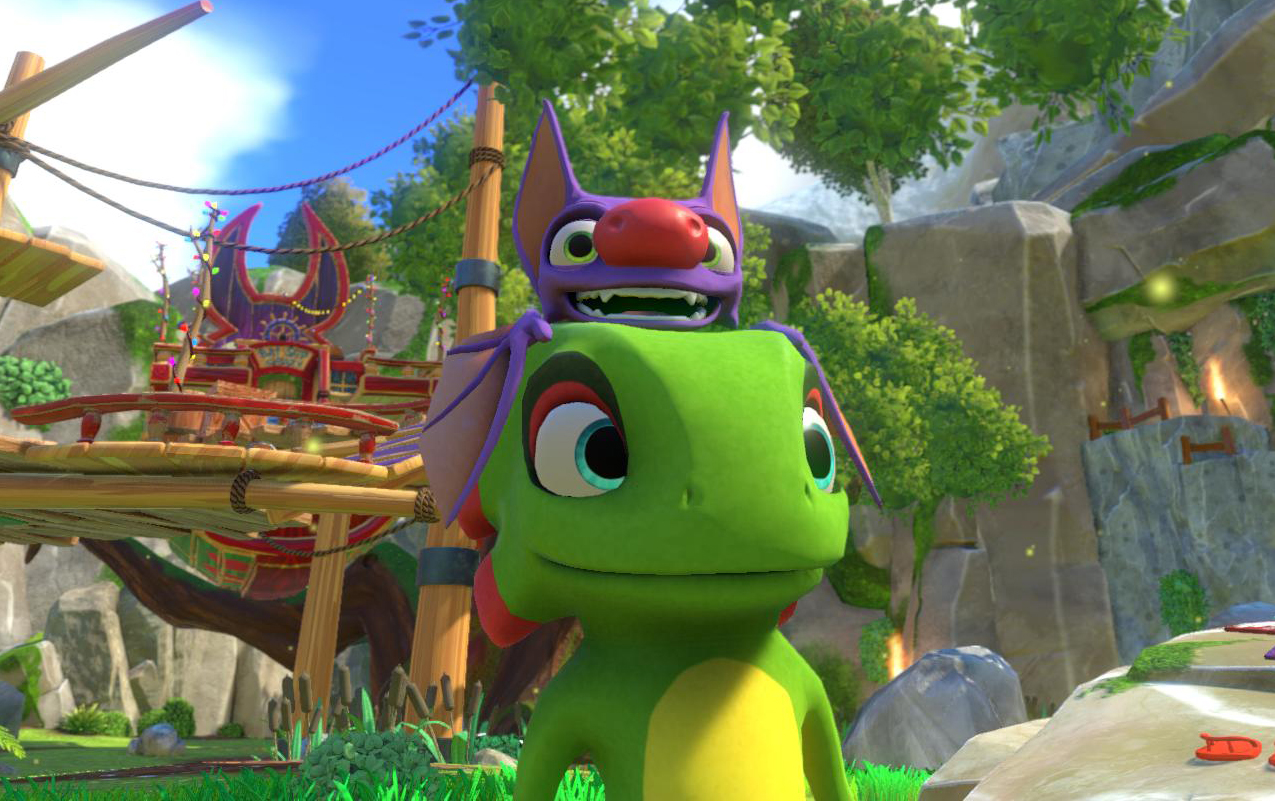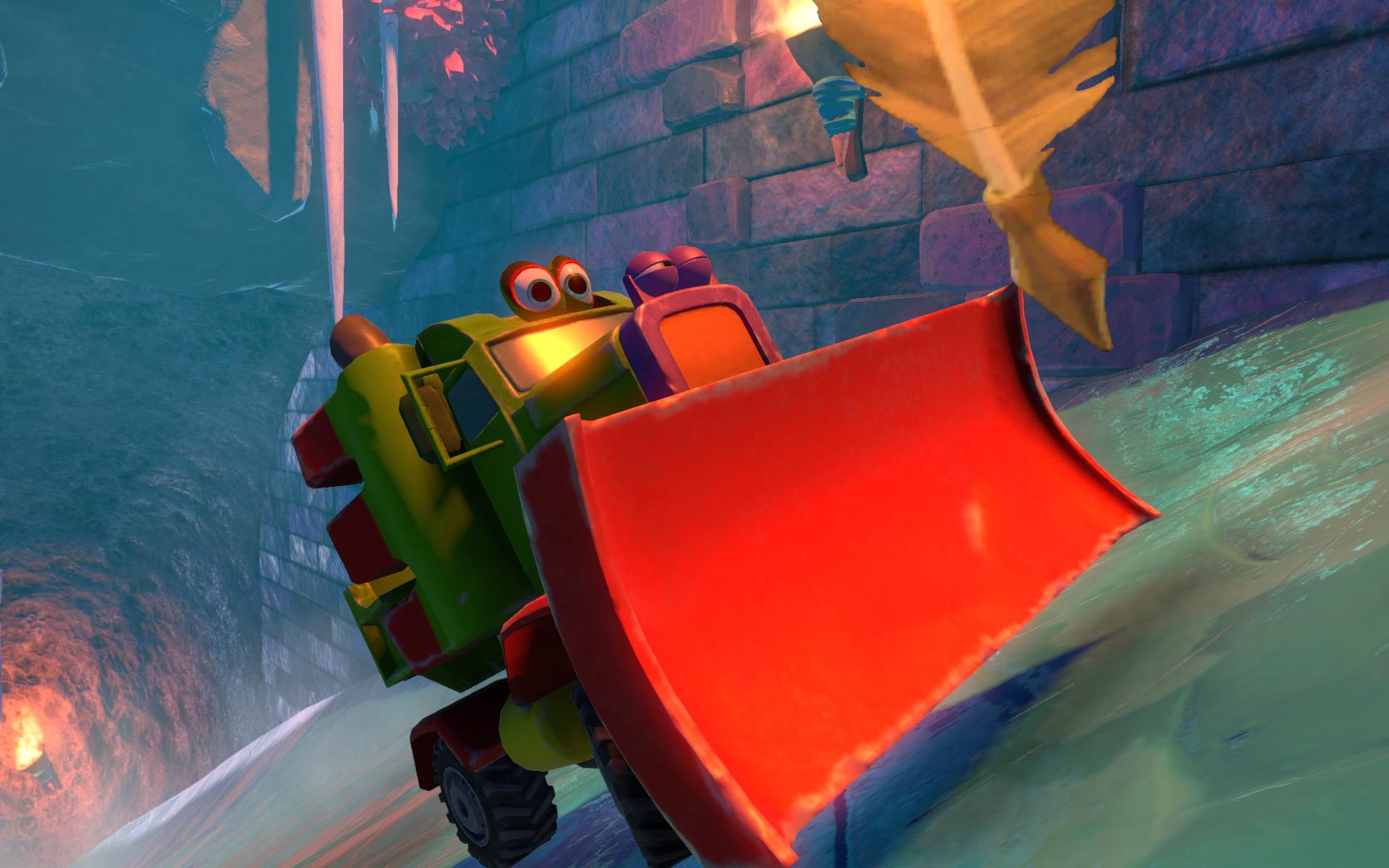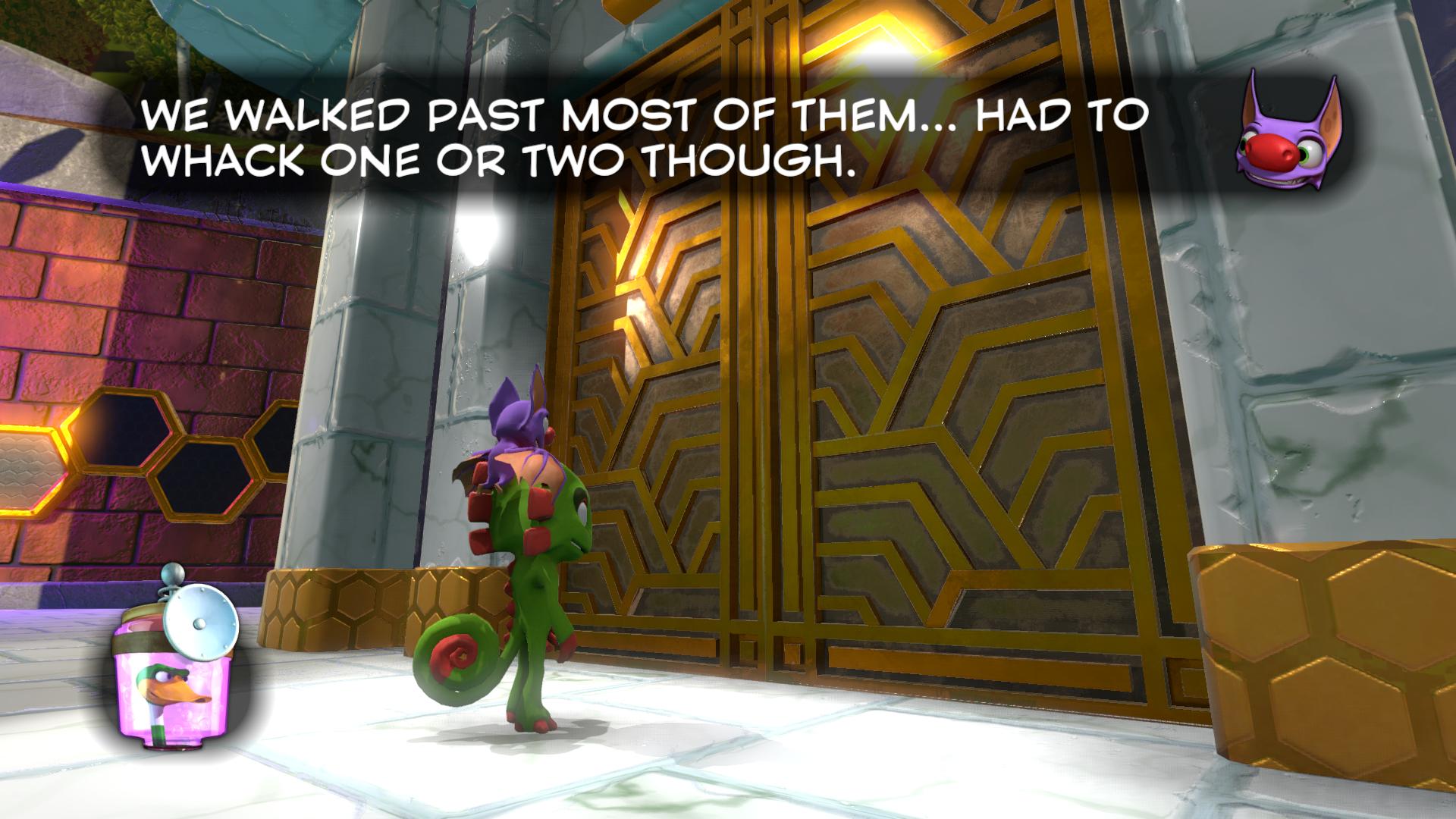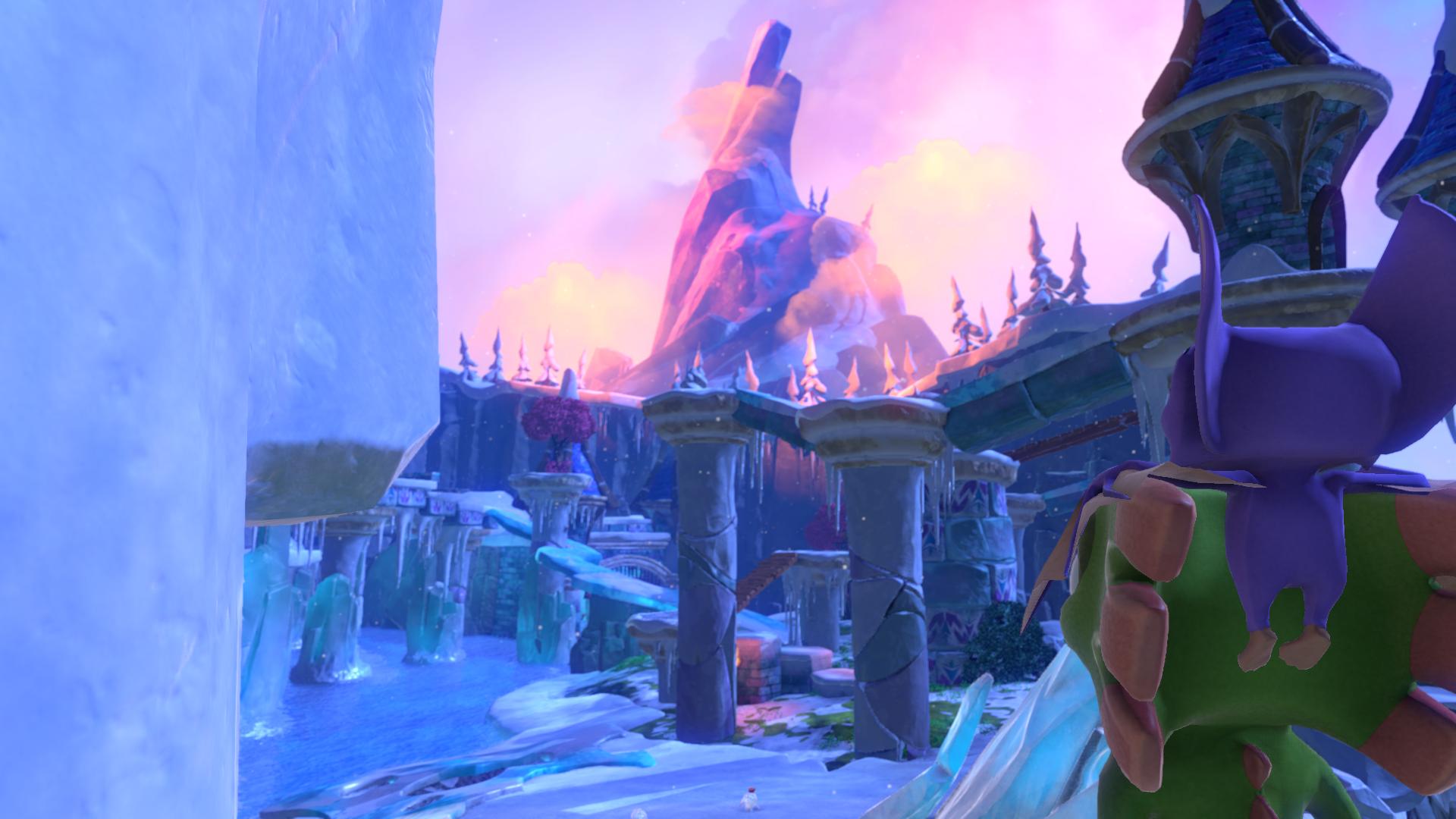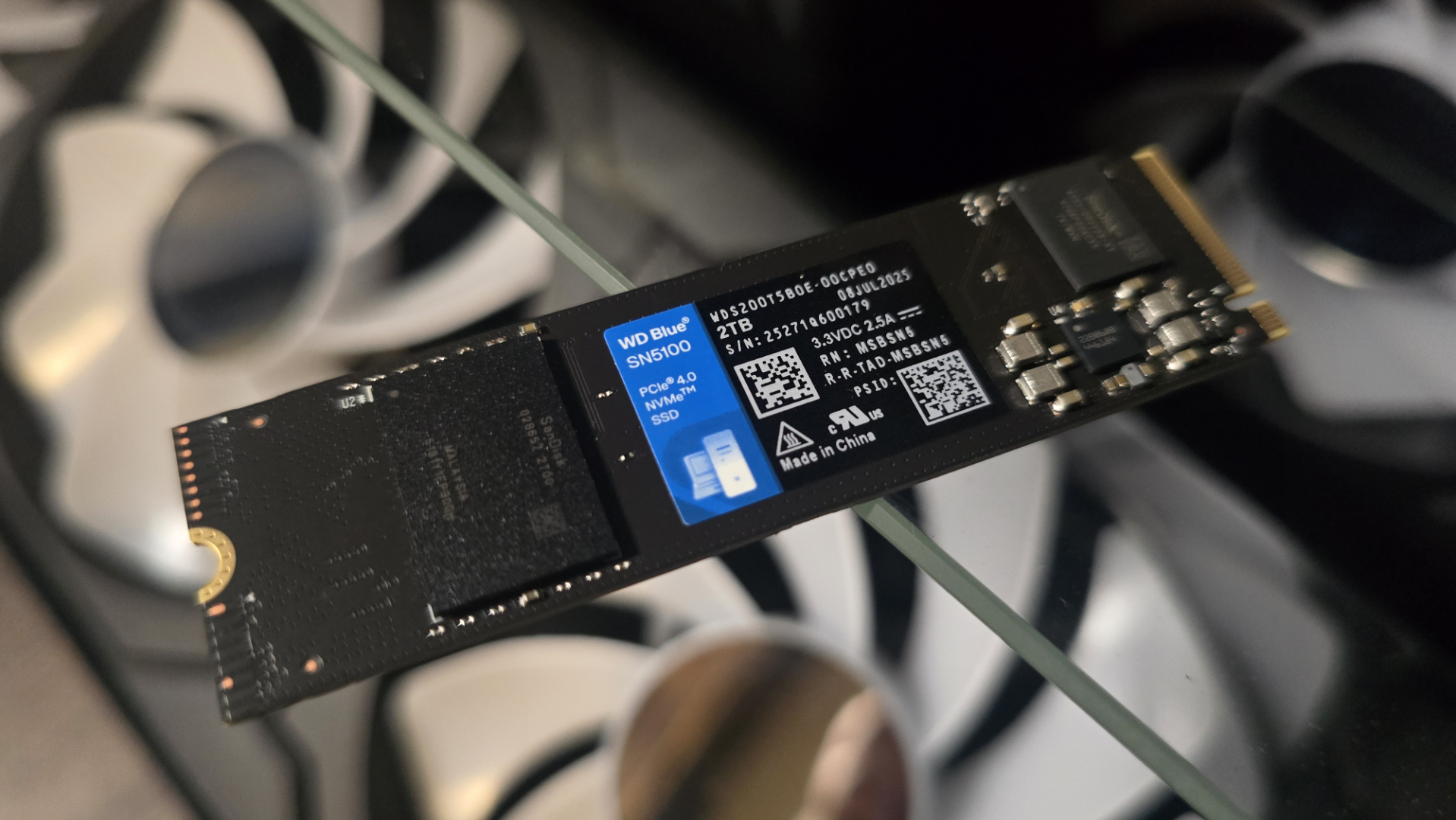Our Verdict
A decent revival of the N64-era 3D platformer, but with all the flaws that carries, as well as some new ones of its own.
PC Gamer's got your back
What is it? An old-school 3D platformer and spiritual successor to Banjo Kazooie.
Expect to pay: $40/£35
Developer: Playtonic Games
Publisher: Team17
Reviewed on: Windows 10, 8GB RAM, GeForce GTX 970
Multiplayer: 2-4 player party minigames
Link: Official site
The hardest enemy I had to fight in Yooka-Laylee was its camera. The hordes of minions sent by evil corporate book-napper Capital B were easily killed and often ignored, but wrestling the third-person camera into submission was like trying to get an actual bat to ride on the head of an actual iguana. Guiding Yooka the iguana and Laylee the bat on a quest to collect magical Pagies and get their book back from Capital B brought both a welcoming sense of nostalgia along with all the familiar flaws of N64-era 3D platformers.
Yooka-Laylee is a spiritual successor to Banjo-Kazooie made by much of the same team, and developer Playtonic Games has shamelessly copied from the Banjo playbook all throughout this revival. The game has the same cheeky dialogue and garbled character voices, the same collectibles to gather in each level, and pretty much the same exact moveset for your interspecies duo—all with a fresh new skin stretched over the top. But Yooka-Laylee also brings back the same terrible camera and dull combat, and aspects of what made Banjo-Kazooie so revolutionary in 1998 don't necessarily hold up two decades later.
One part that definitely did hold up, however, is the jump. As simple as it is, a platformer's jump can make or break the entire game. Here, Yooka-Laylee feels exactly right. Key components like high-jumping from a crouch or double-jumping into a glide feel natural and make walking around any of the game's five main worlds (plus a hub world connecting them all) smooth and satisfying. Missing jumps or falling off ledges, for the most part, felt like my fault—which is a victory not to be understated.
This may look like a staged screenshot, but it's actually just one of the horrible camera angles going uphill in a closed hallway can cause.
By contrast, Yooka-Laylee's wider selection of movement systems rarely reach the same standard. There are unique transformations in each world, and most of them are a mess to control. The snowplow transformation on Glitterglaze Glacier nearly had me rage-quitting as I unpredictably drove off cliffs—I slowly learned that the plow can't reverse, and pressing back actually moves you forward in a wide turn. A later move that let's Yooka grab onto Laylee's legs and fly for an extended period of time was nearly impossible to control accurately if I wasn't moving in a straight line, and glitched out visually if I went too high.
Camera-camera-chameleon
These issues are exacerbated by the aforementioned very bad camera. It wasn't uncommon for the camera to pull in uncomfortably close (and usually aim straight down at the floor) anytime I got just a little too close to a wall or a corridor was a bit too tight, which is the sort of nostalgia I could have done without. If Playtonic is trying to perfectly recreate an N64 game, then the awful camera angles are certainly part of that legacy.
Another example of a 90s holdover is Yooka-Laylee's lackluster combat. It's not terrible, it's just pointless. There are two main types of enemies you'll be fighting: a pair of bouncing eyeballs that attach themselves to nearby objects, and a generic minion that changes appearance in each world but only ever takes one hit to kill—or two, if it's wearing a hat. I could literally walk past the vast majority of them, but occasionally a few would get in the way and become a chore to clean-up with a basic spin attack, respawning liberally to make my efforts even more pointless. No attempt has been made to make combat interesting, and Laylee even says as much in a moment toward the end of the game.
Keep up to date with the most important stories and the best deals, as picked by the PC Gamer team.
Laylee says what I'm thinking so often it's sort of unsettling.
But these legacy issues aren't the only problems. Yooka-Laylee's biggest failing comes in its level design: the five worlds feel hollow, lacking soul, despite some cute themes. Each is an open sandbox with a smattering of Pagie-rewarding challenges to complete or puzzles to solve. The game's Steam page refers to them as playgrounds, which I think is a better name than 'world,' because they don't feel fleshed out enough to be chunks of some real place.
I rarely ever platformed to progress through a level, just to get my prize and move on to the next one.
Yooka-Laylee also has a variety problem, often reusing tweaked versions of challenges and characters even if they have no relevance to the theme, ensuring the worlds don't have unique identities of their own. There are multiple giant golf courses, lots of inexplicably floating minecart courses, and so many mind-numbing, god-awful quiz segments that even Laylee got sick of that shit. I was sick of it after a single quiz. And none of the quirky characters you meet feel like they have a place in the world. They're just sprinkled around the map like Pagies—you won't find Mumbo's Hut built as part of the landscape, for example.
The Capital Cashino world arguably has the strongest voice of its own, taking place in a giant casino full of games and gambling. Instead of Pagies, you get tokens that you can turn in for Pagies, ten-for-one. I was hopeful entering Capital Cashino that it would be a more thoughtful level, but tokens were earned almost entirely through tiny and unsatisfying minigames like Pachinko and slot machines. There are at least half a dozen nearly identical slot machines scattered around the world, which felt more like filler than soul.
The themes of the worlds are genuinely lovely, though, lush with detail and each one very different than the others. Yooka-Laylee is a beautiful looking game when played on its highest setting, and I love that the UI is hidden whenever it's not needed. The bright colors and varied environments really shine, and are supported by some fantastic character design, even if they don't fit into those worlds. The music from veteran Rare composers Grant Kirkhope and David Wise is some of the best I've heard in a long while, and may even outshine Banjo-Kazooie's at times.
On the performance side, Yooka-Laylee ran at a solid 60 fps on my GTX 970 while at max settings. The options you can adjust are very limited, but thankfully I ran into essentially no performance issues while I played. While it's definitely meant to be played with a gamepad, it controls well enough with a mouse and keyboard if you prefer—though the camera is even more unwieldy that way. A slight annoyance is that some button prompts will still be shown as 'A' and 'B' buttons no matter your control scheme.
Playground bully
Yooka-Laylee looks and sounds like the modern 3D platformer the I've been dreaming of for a while. It's just that the actual things to do in each world don't feel quite as inspired. I really did like many of the jungle-gyms I was given to hop around, and some of Yooka-Laylee's more fun Pagies to earn were timed jumping courses which required real dexterity. But they were usually self-contained little loops that always ended where they began, meaning I rarely ever platformed to progress through a level, just to get my prize and move on to the next one. There's a lot of walking between things to do.
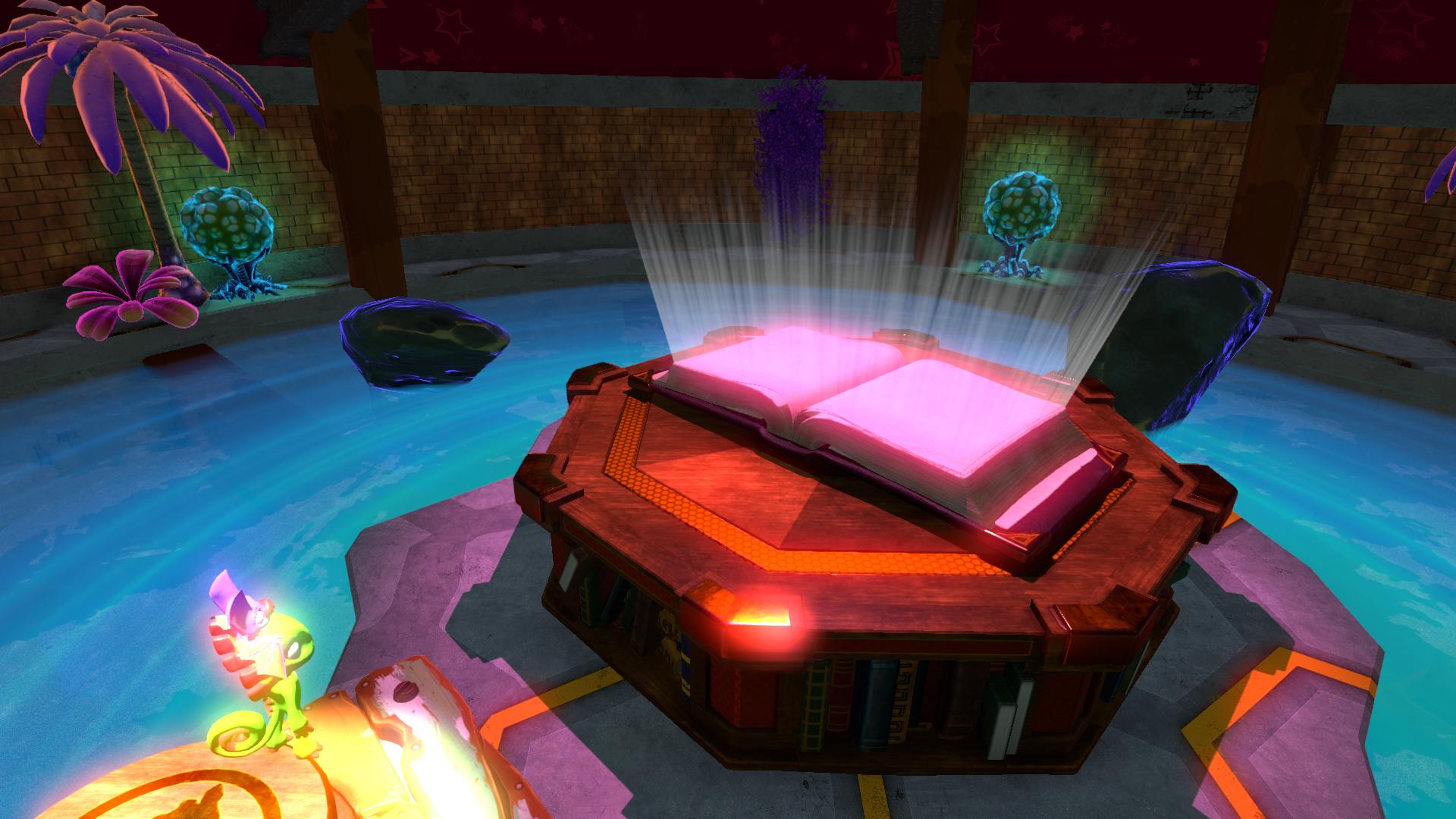
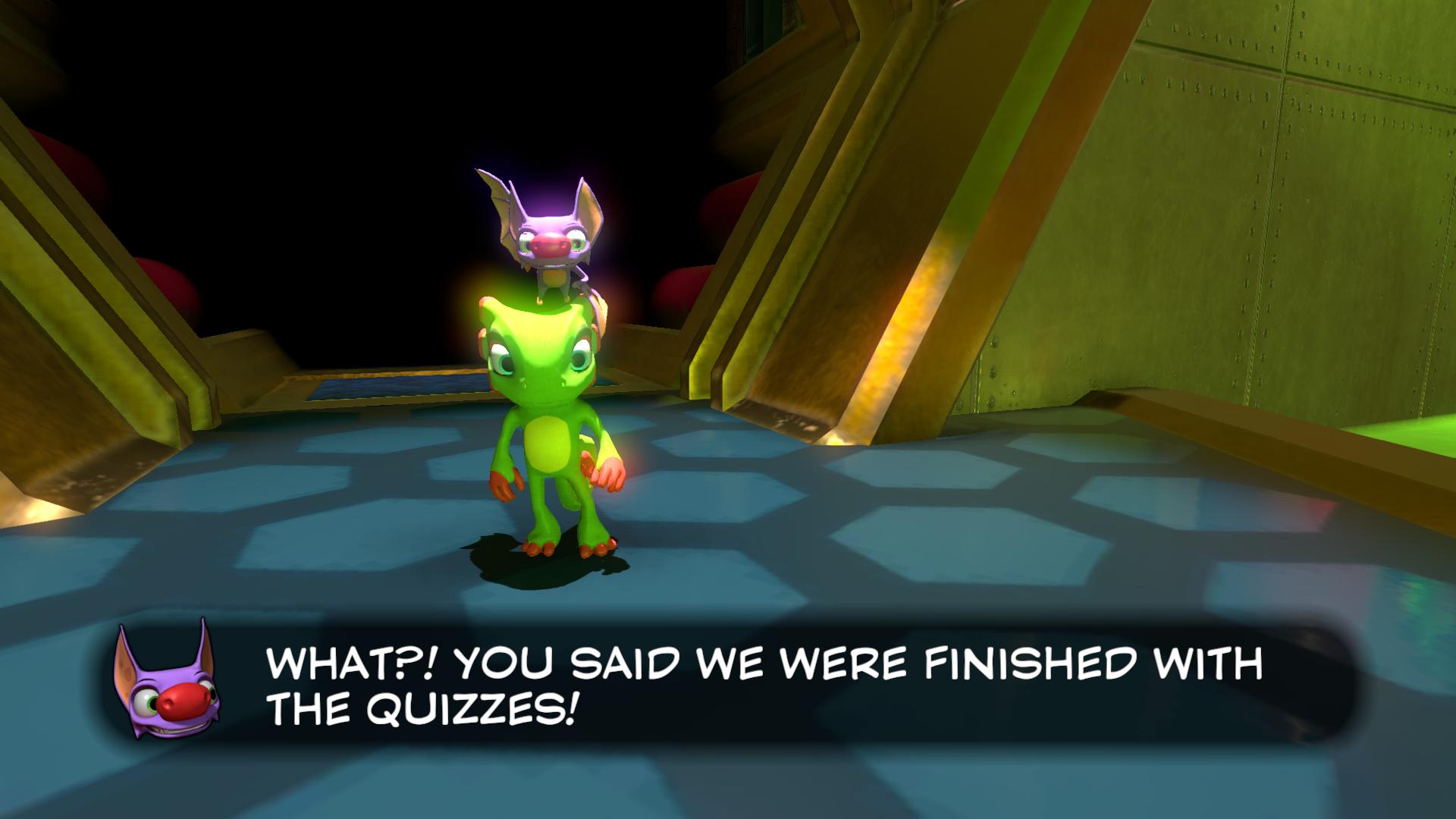
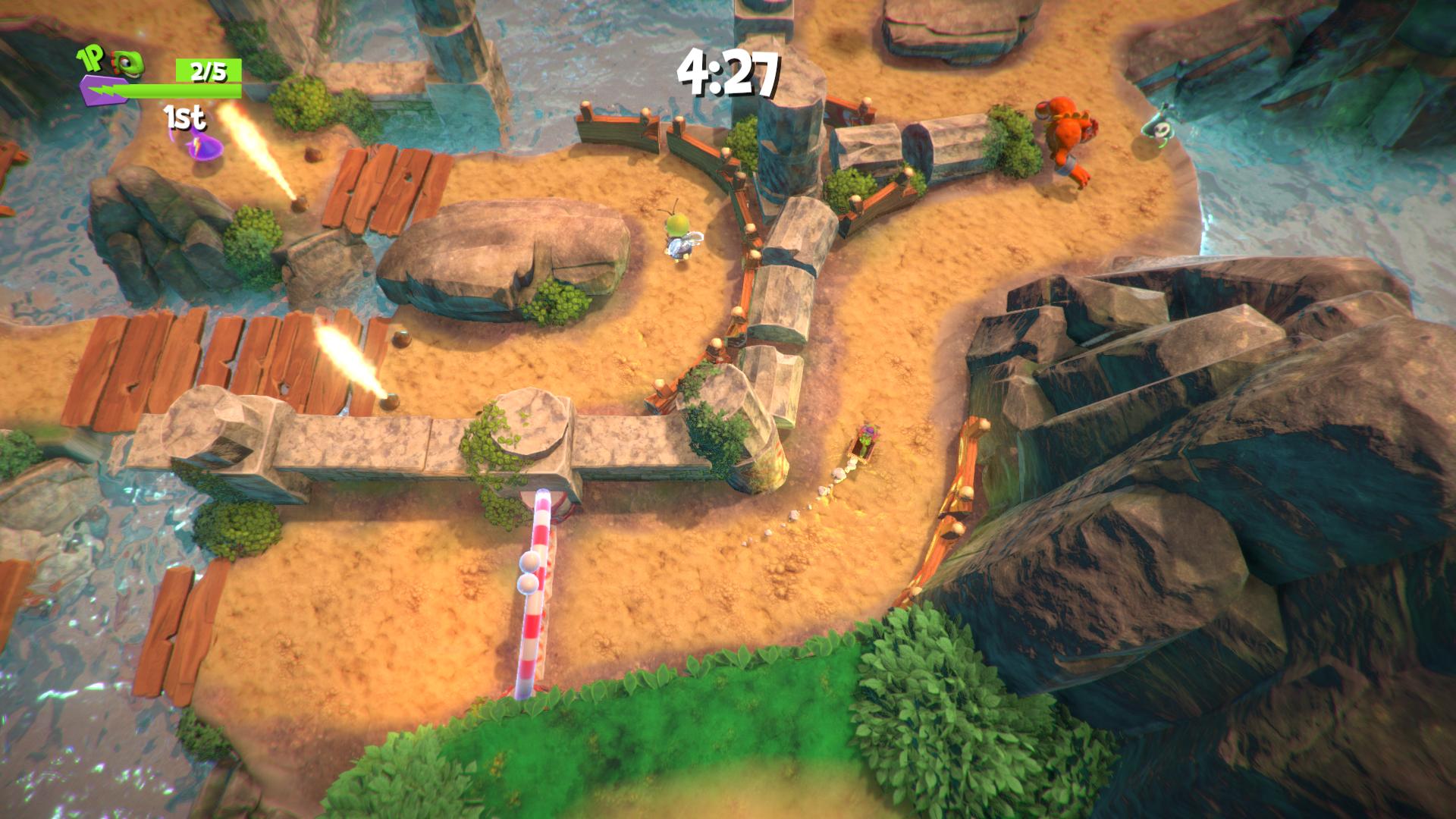
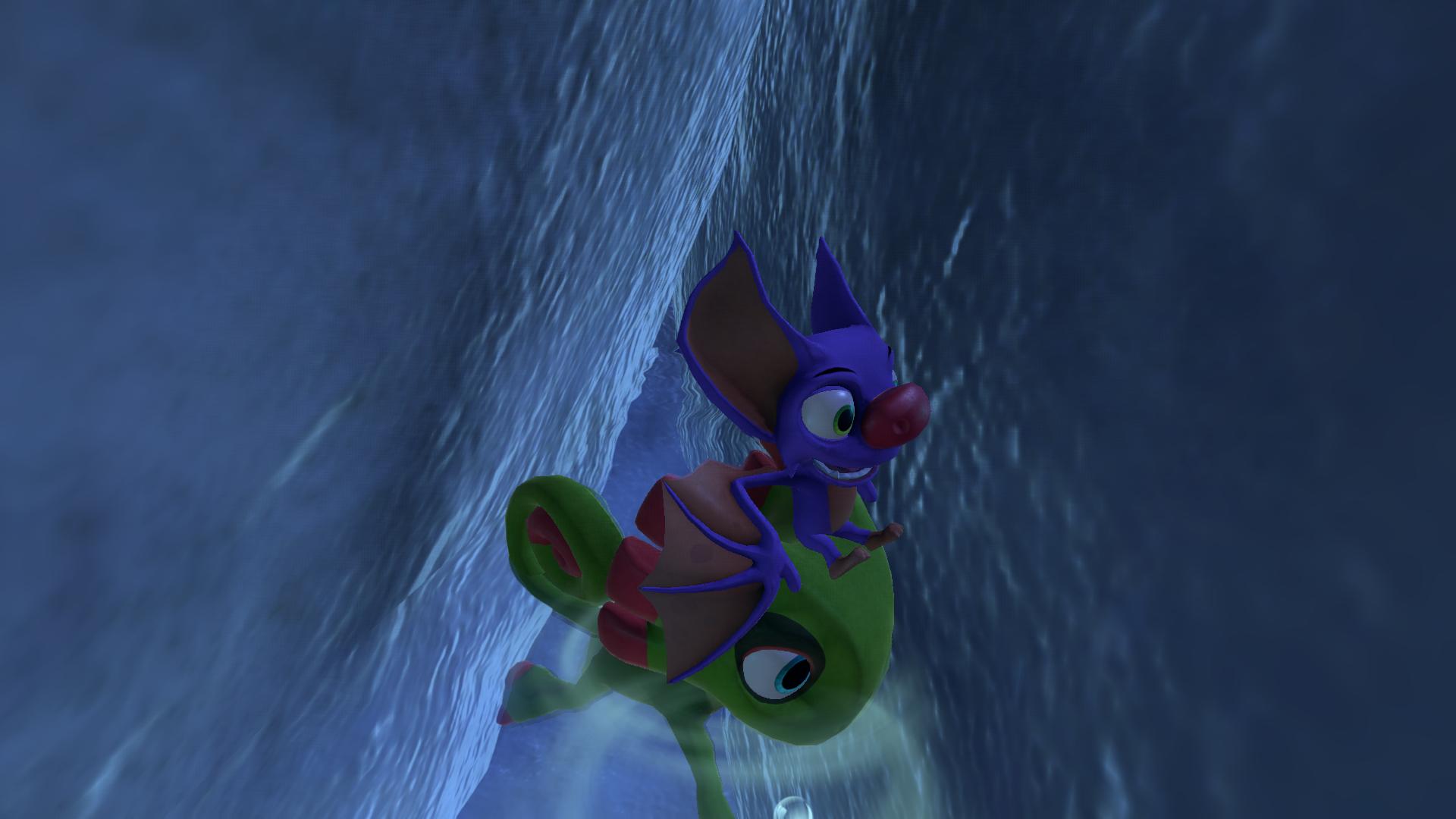
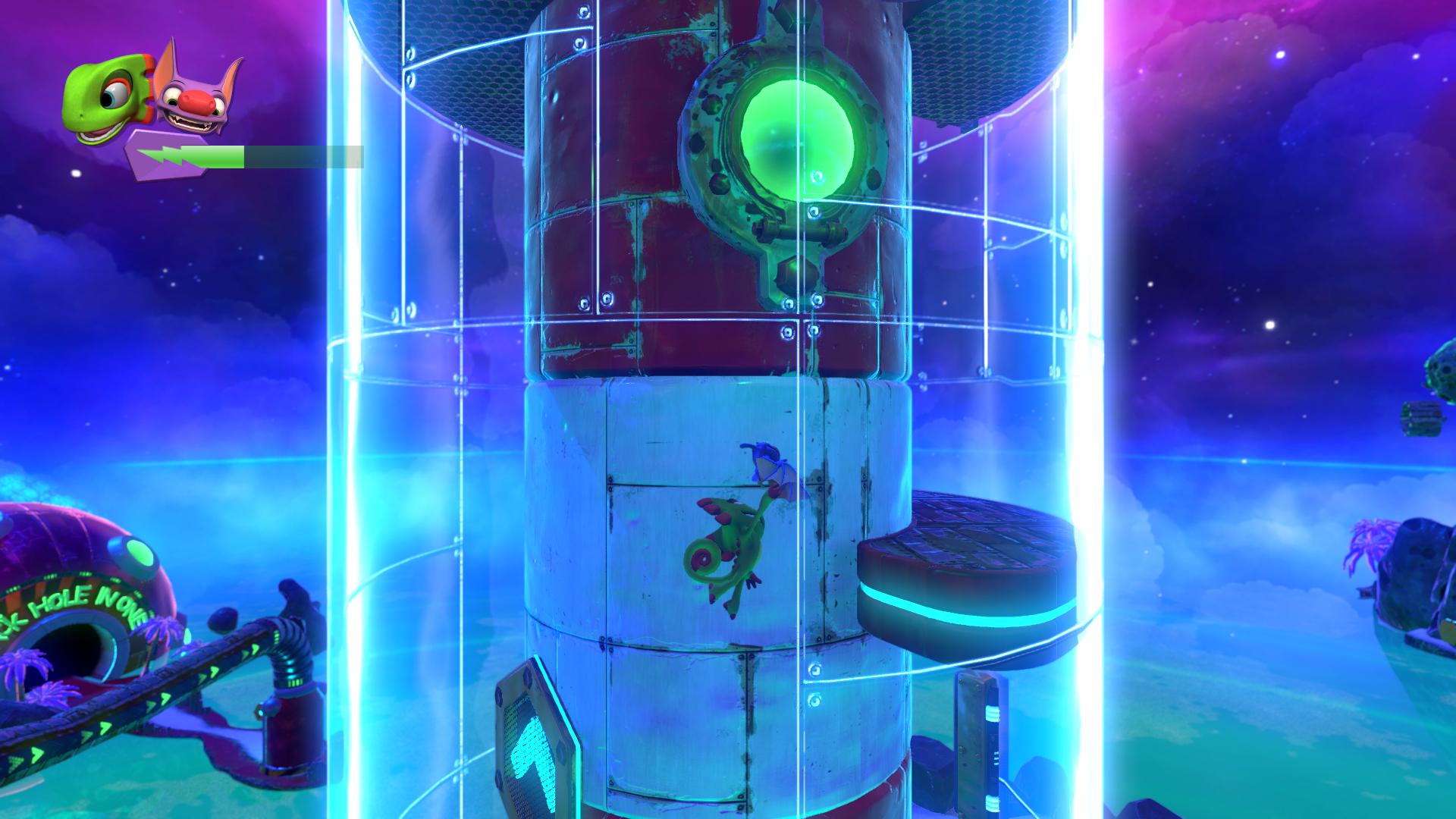
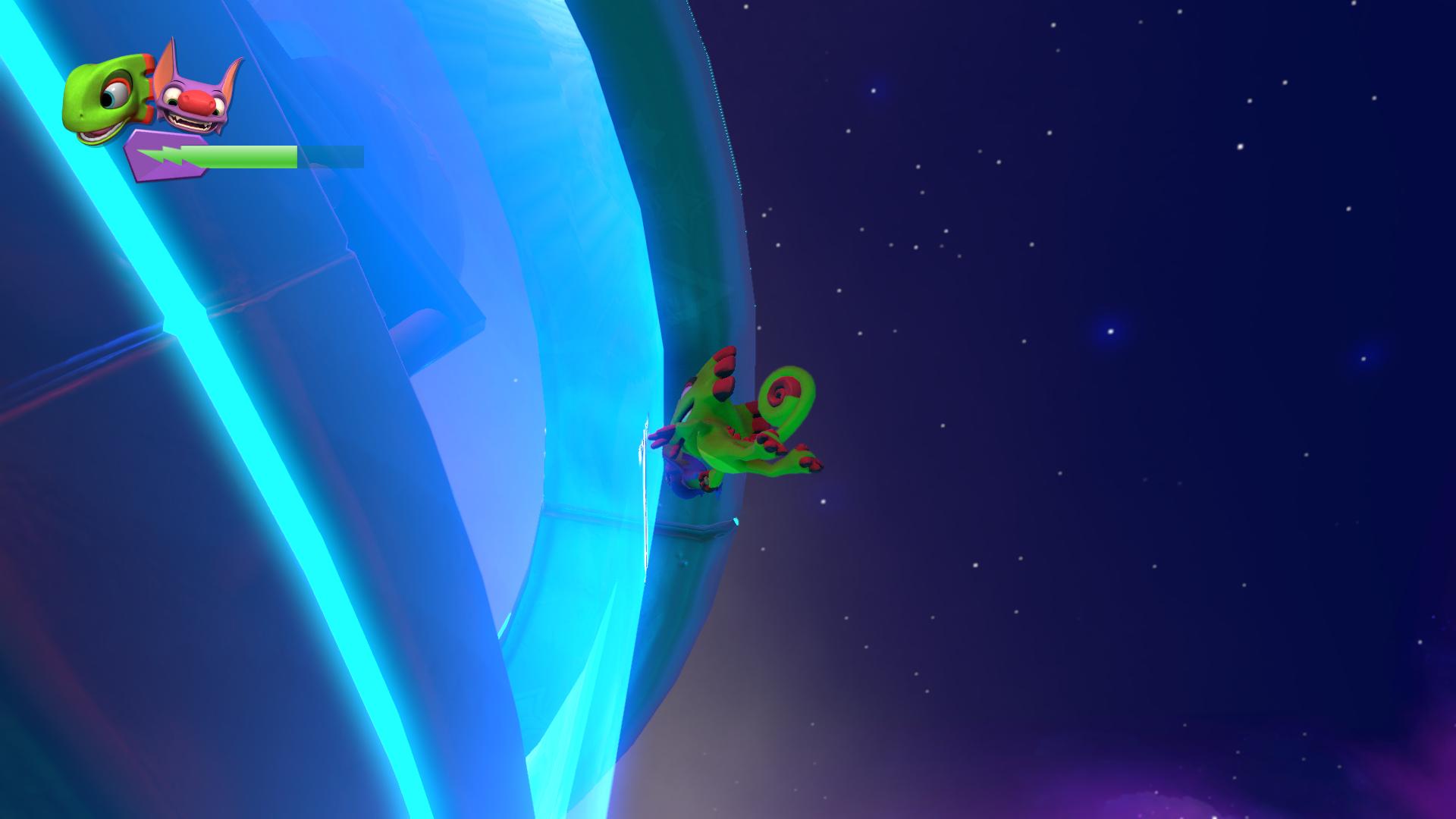
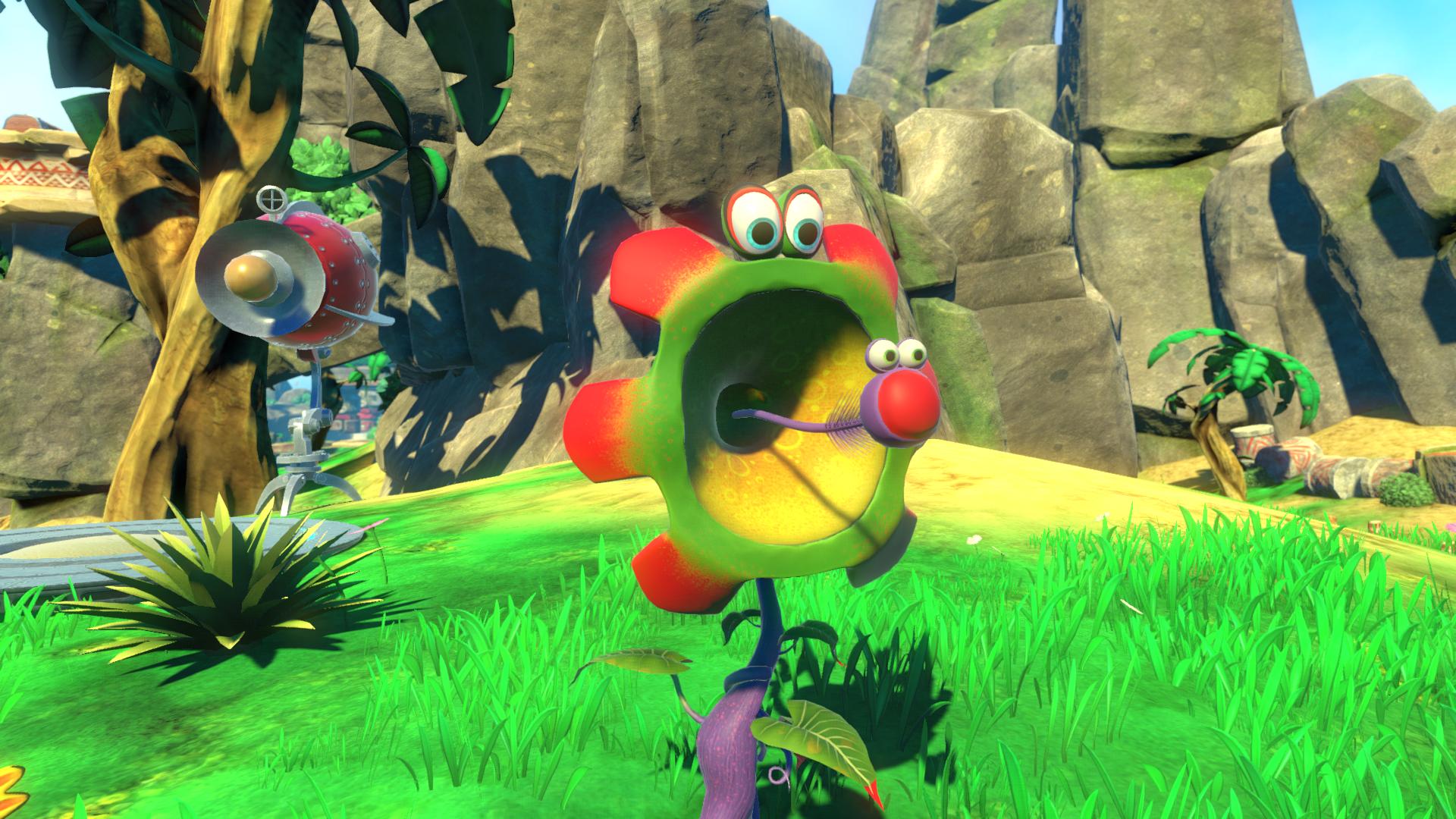
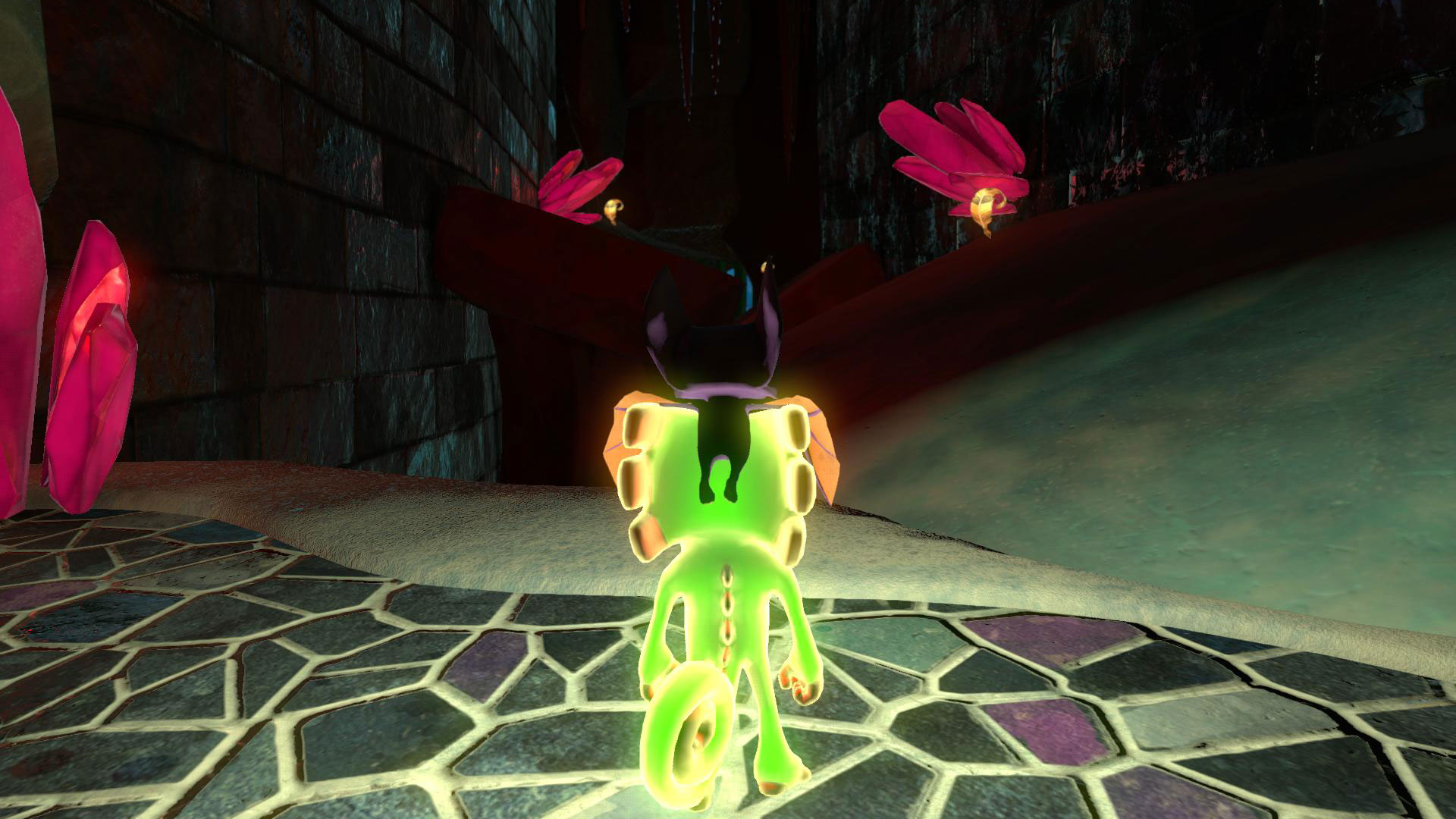
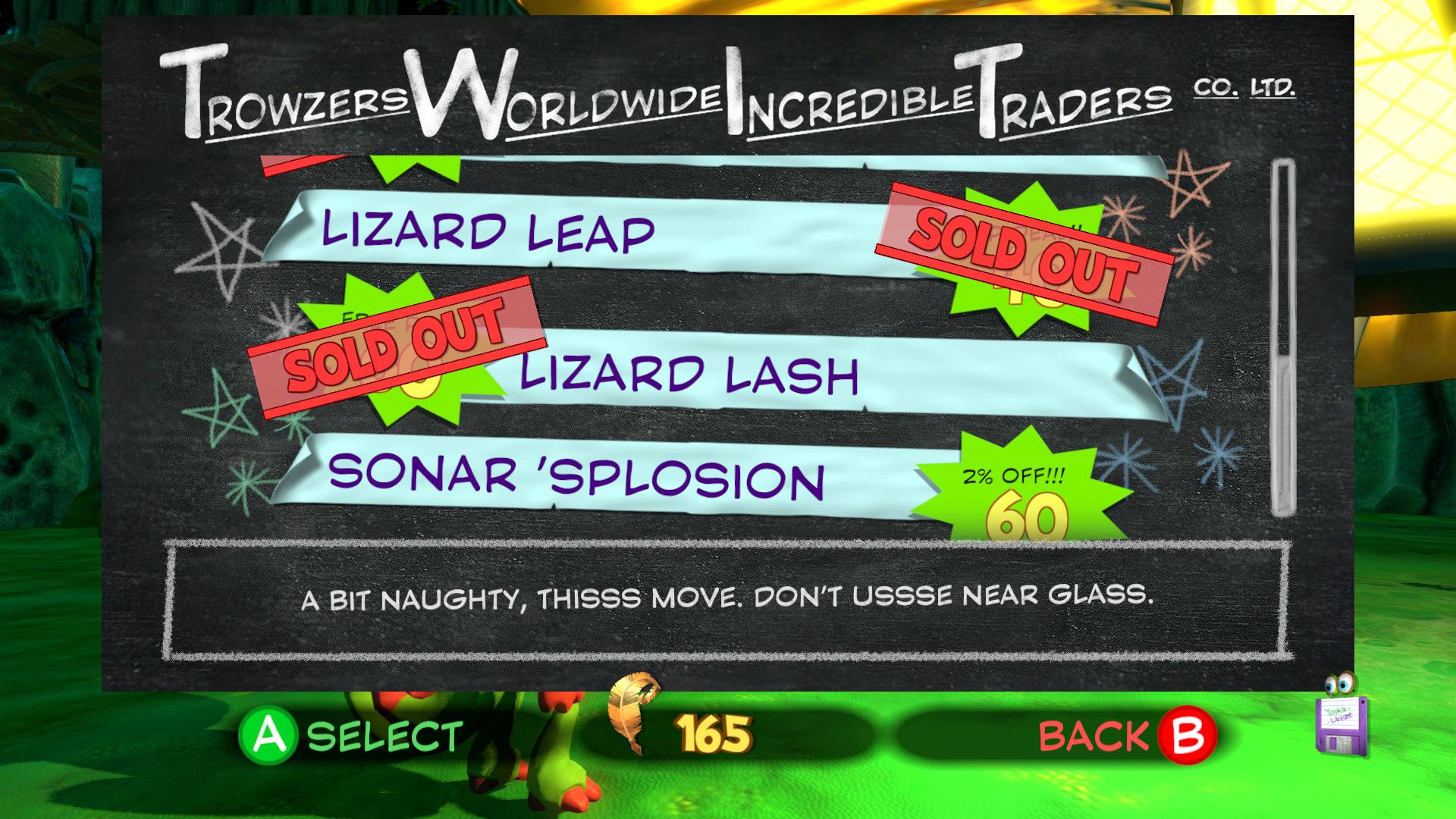
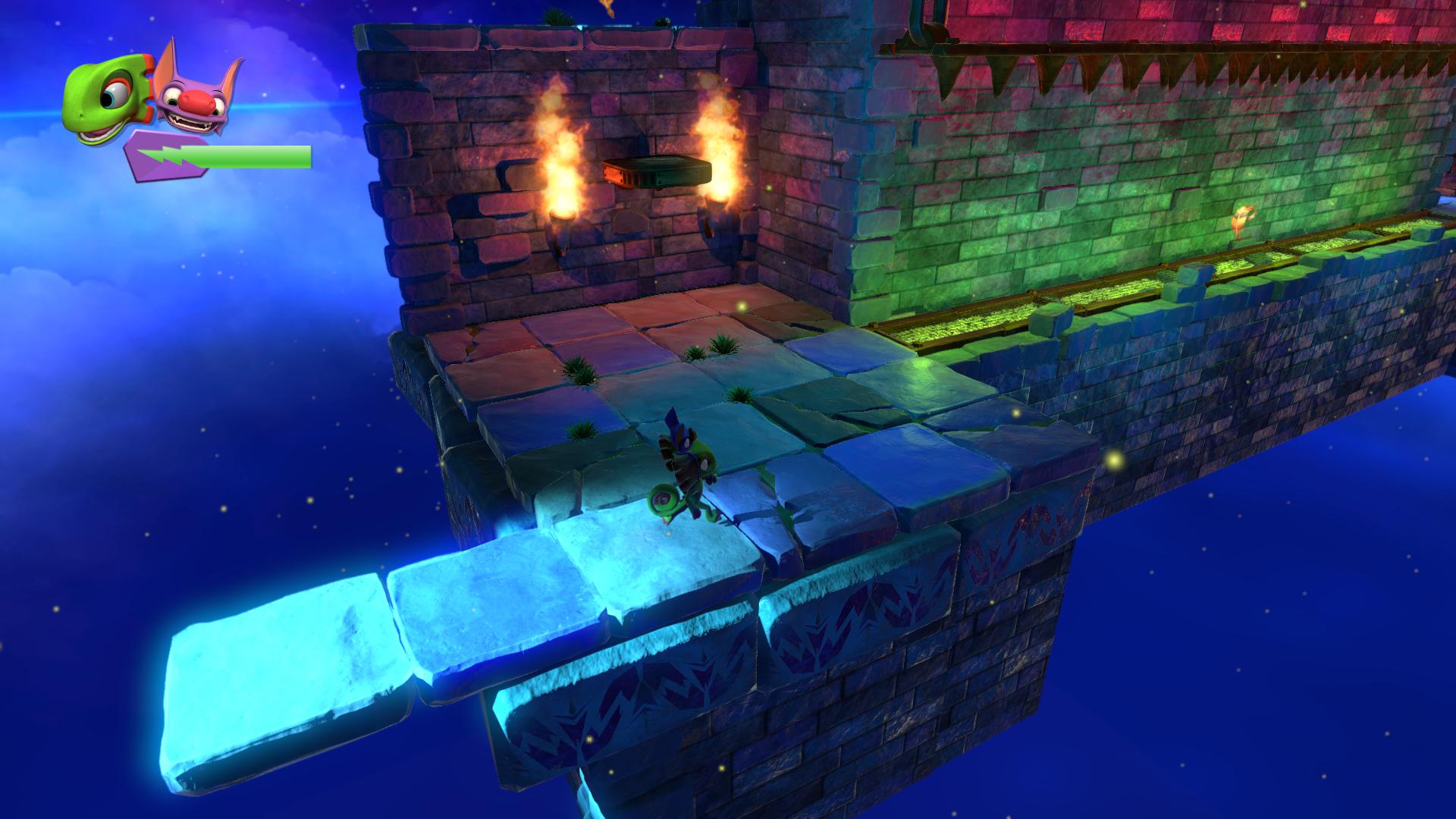
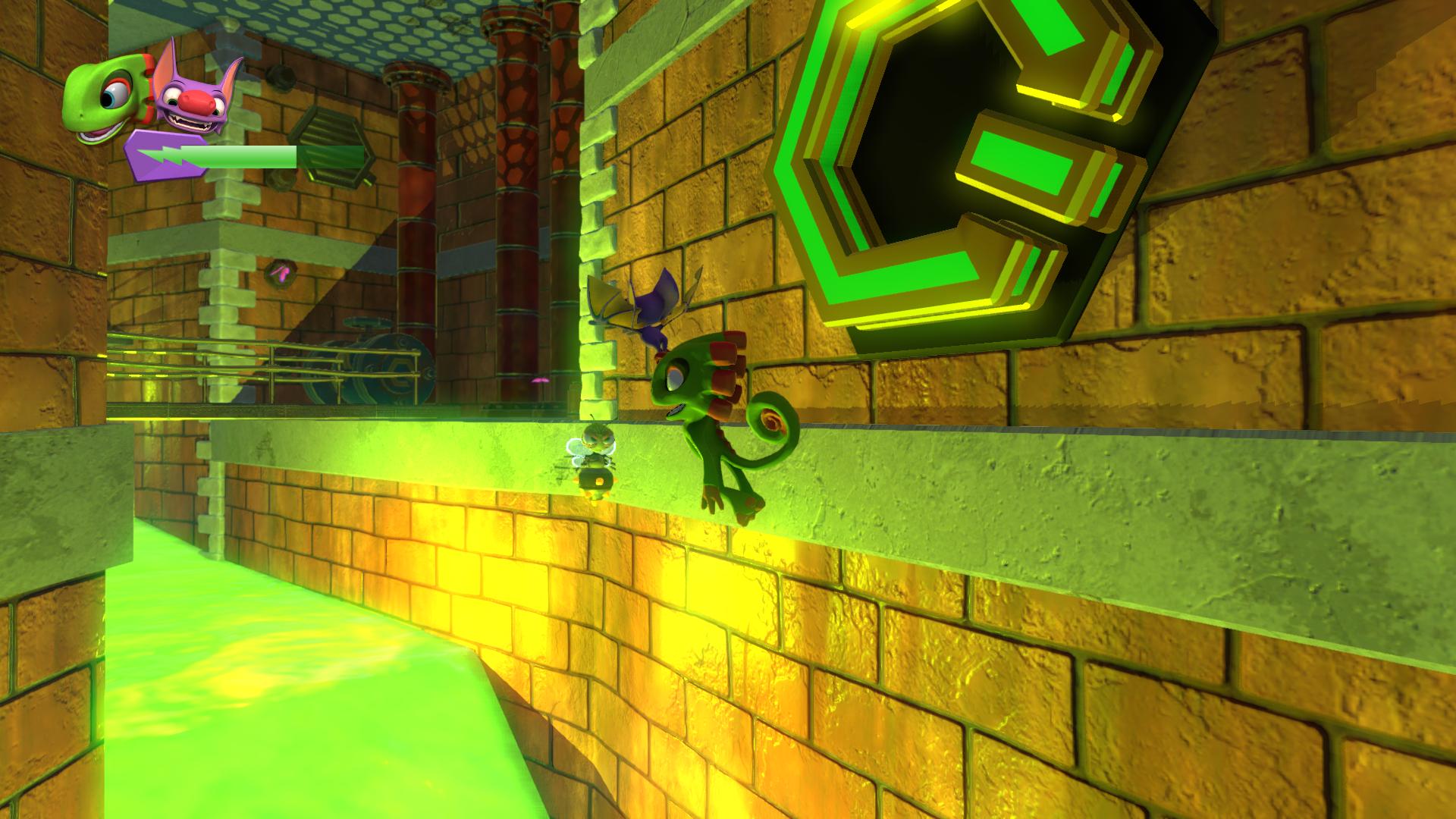
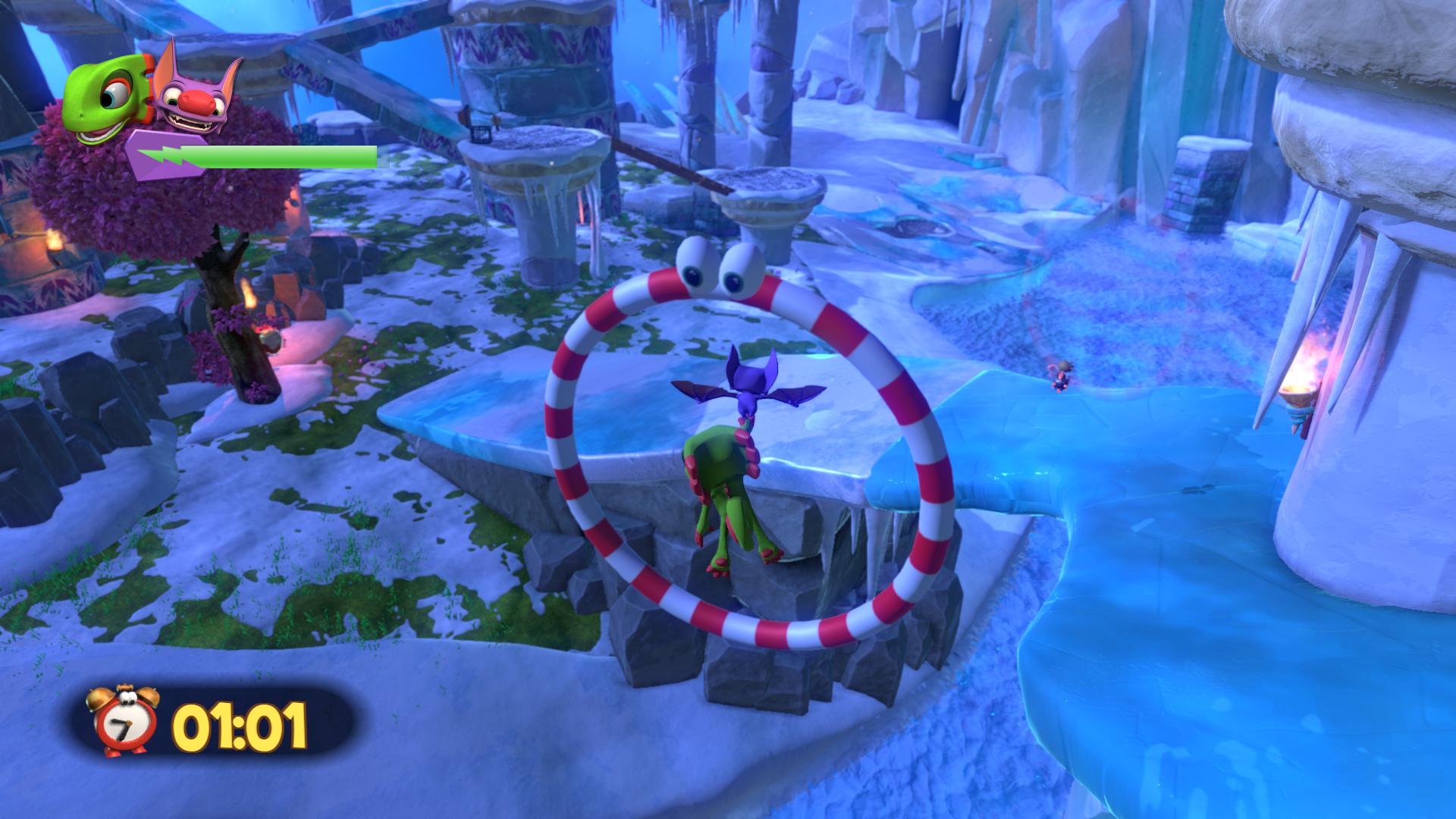
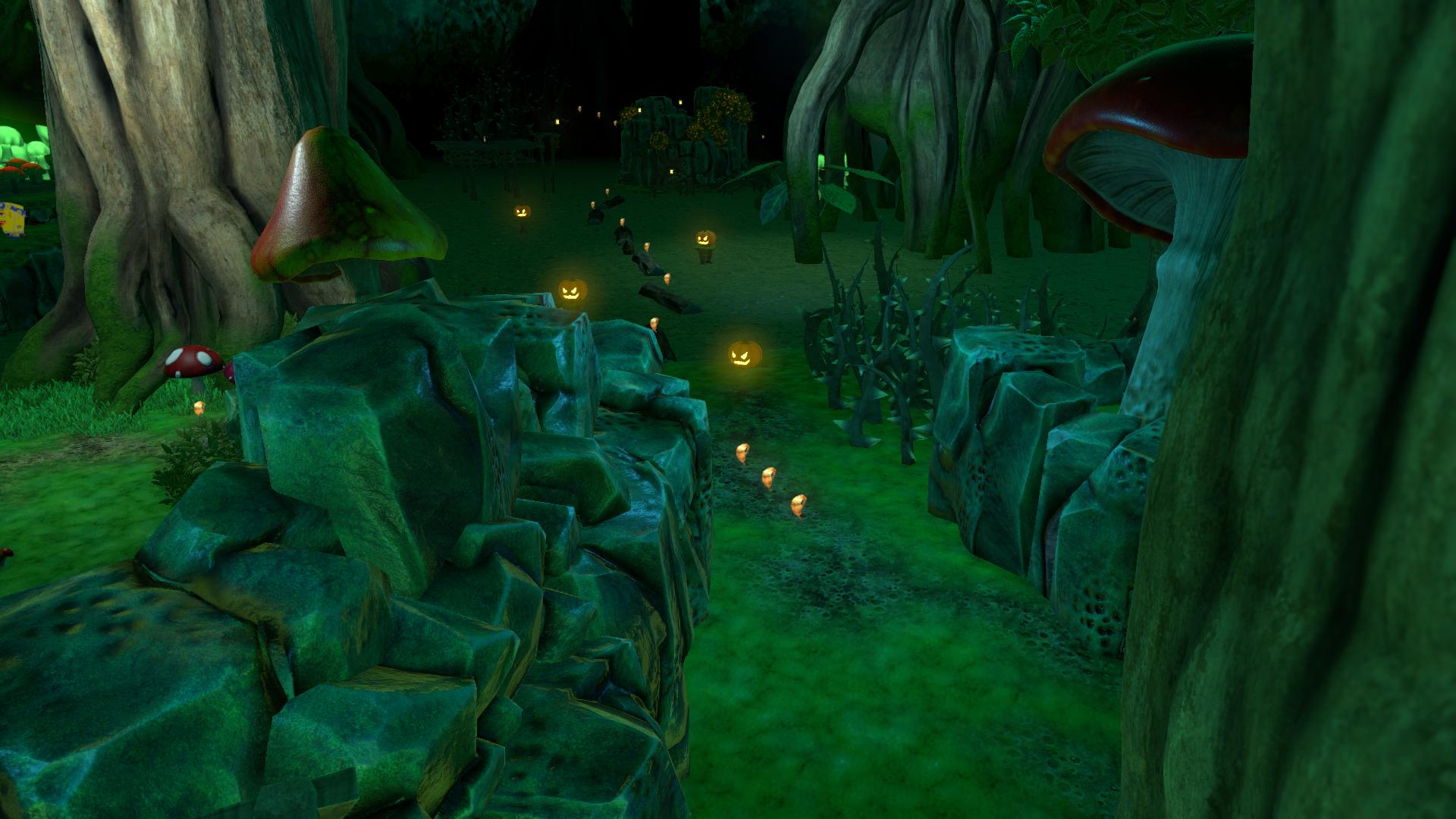
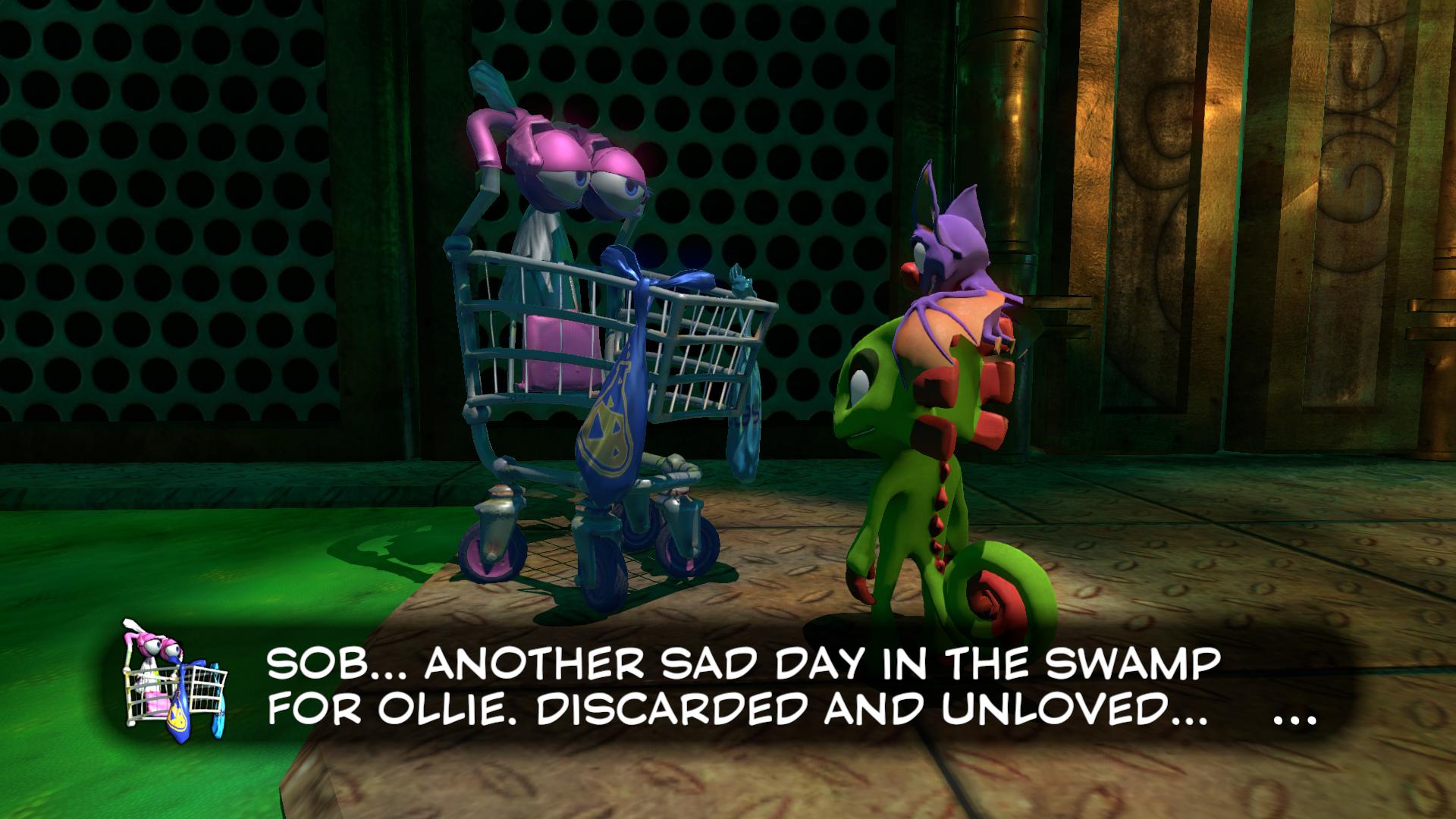
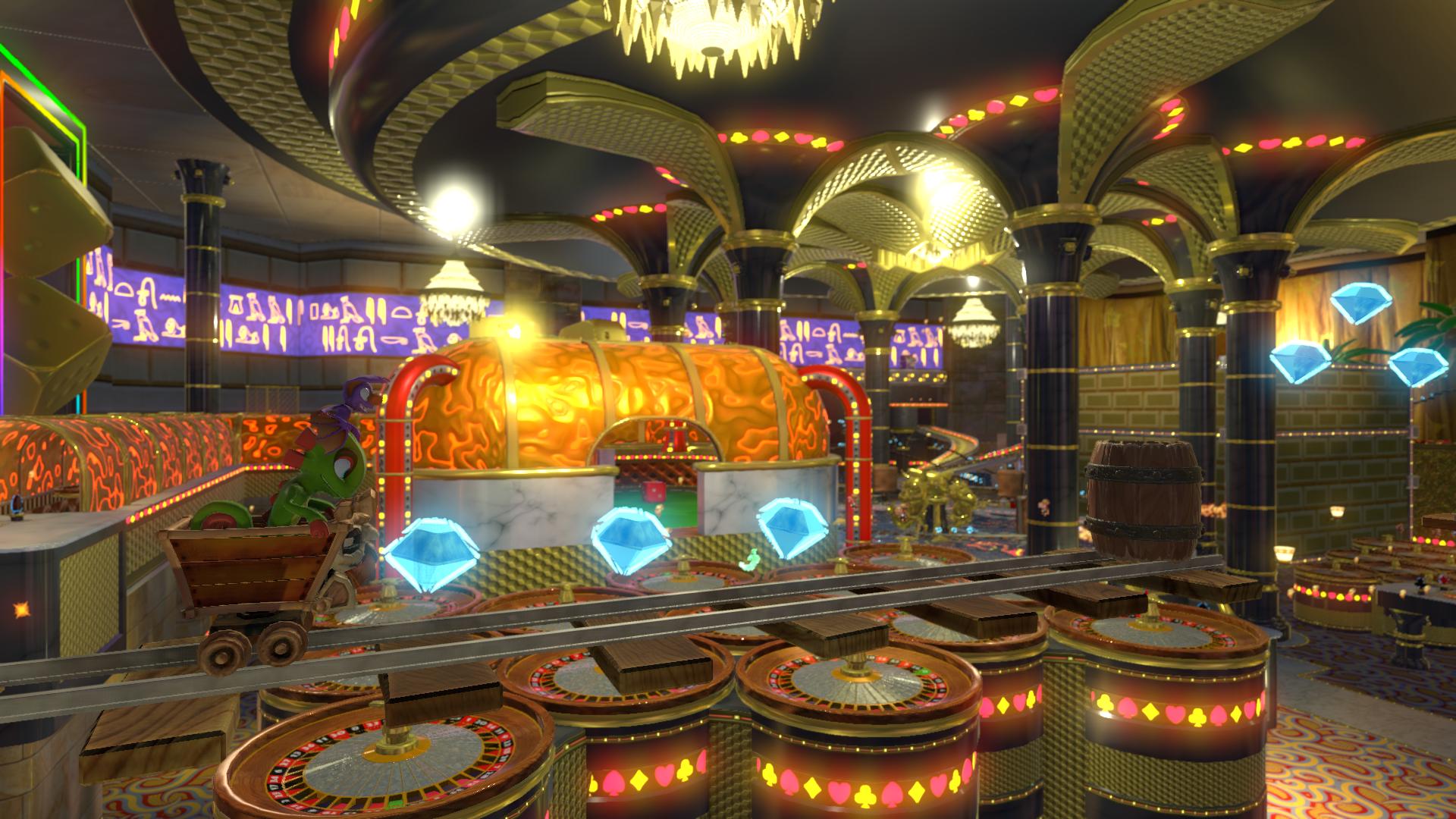
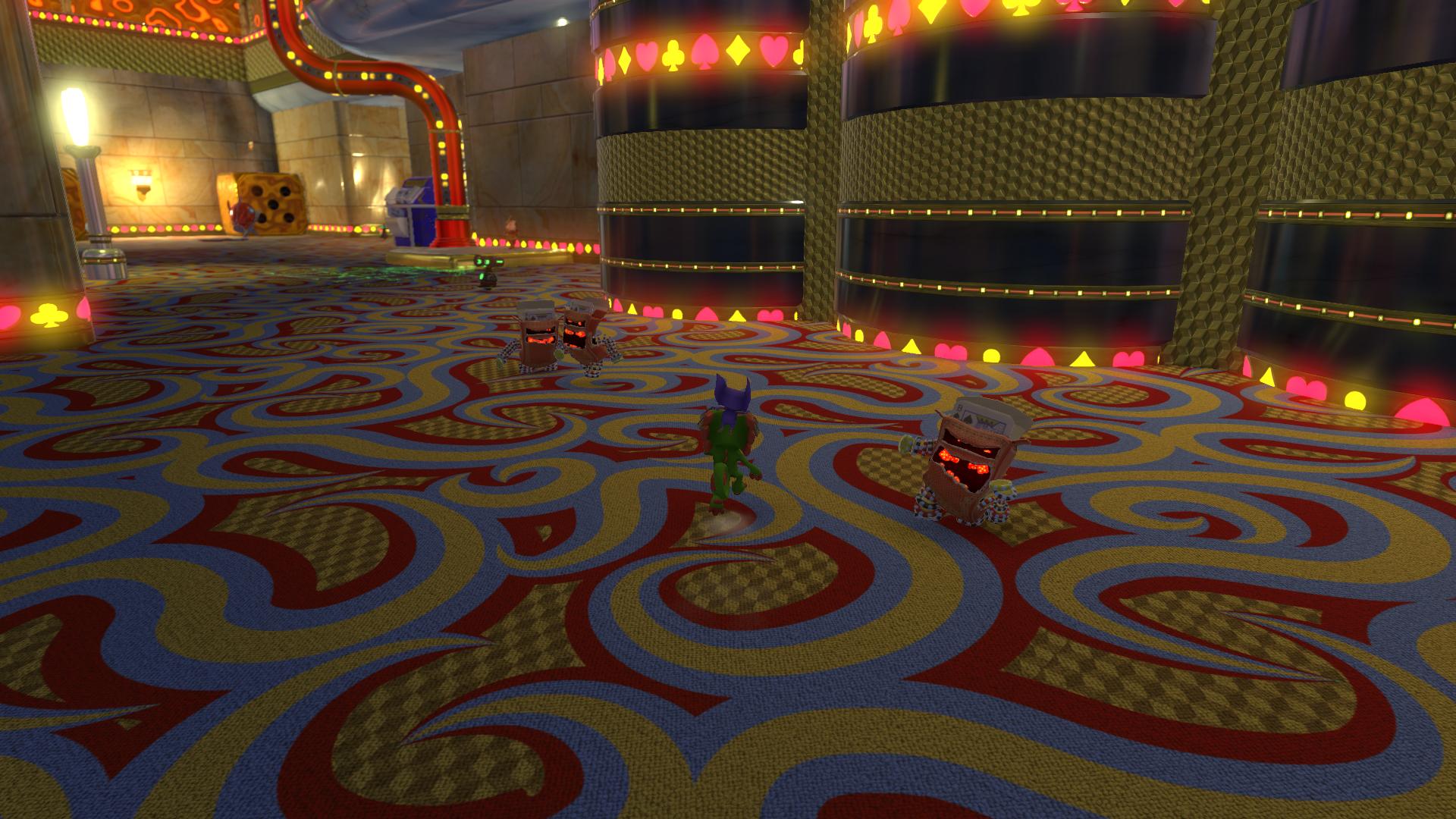
The more I explored each of Yooka-Laylee's worlds, the more they felt like a first pass instead of a final product. They all reminded me of the Toybox demo world initially sent out to Kickstarter backers, with different features and challenges plopped around to easily show off rather than be part of some coherent fiction. I frequently found nooks and crannies in walls that could have held secrets, but instead were just the result of boundary geometry not quite meeting up properly. While the contents of these worlds felt refined, the worlds themselves were nothing more than shells, and I doubt I'll remember any of them fondly like I do Treasure Trove Cove from Banjo or Dire Dire Docks from Super Mario 64.
Yooka-Laylee is frustrating because it has genuine touches of greatness. It has a phenomenal soundtrack, cheeky and clever dialogue, and tight fundamental platforming that would stand tall amongst its inspirations. But all of that is muddled by soulless level design that's OK at its best and a swath of frustrating or repetitive extras. It took me 12 hours to beat the game, but that's without getting all 145 Pagies available. I could probably spend another 5-10 hours finishing off everything there is to do, but frankly Yooka-Laylee just didn't make me want to.
Playtonic did a fine enough job of recreating the nostalgia of playing Banjo-Kazooie, but Yooka-Laylee simultaneously revives all the bad parts of those games while never quite living up to the good parts. As a spiritual successor, it stands nicely as an homage that didn't quite hit all of its marks. But as a game on its own, removed from the context of its roots, Yooka-Laylee is an alright 3D platformer that unfortunately doesn't make a strong case for the revival of a genre I love.
A decent revival of the N64-era 3D platformer, but with all the flaws that carries, as well as some new ones of its own.
